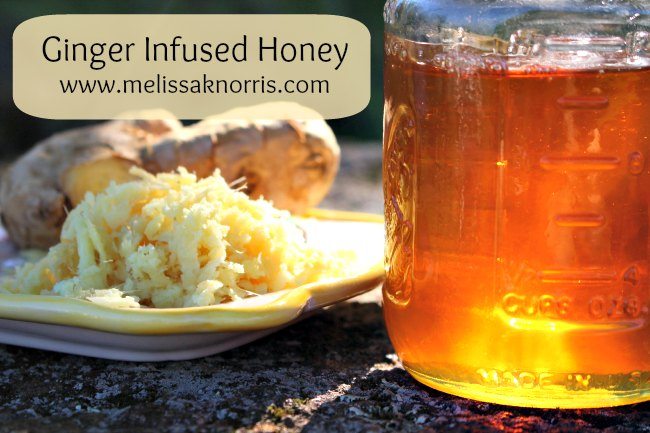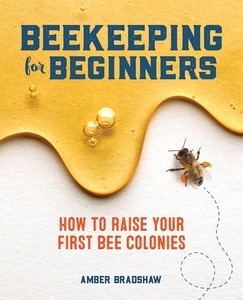How to start beekeeping, because honey bees offer us so much besides the delicious liquid gold we love to sweeten our foods.
Even though when we typically think of livestock on the homestead, we tend to think of raising chickens for eggs and meat, cows for milk and grass-fed beef, maybe even goats and pigs, we discount bees when honey bees actually provide us with multiple things on the homestead.
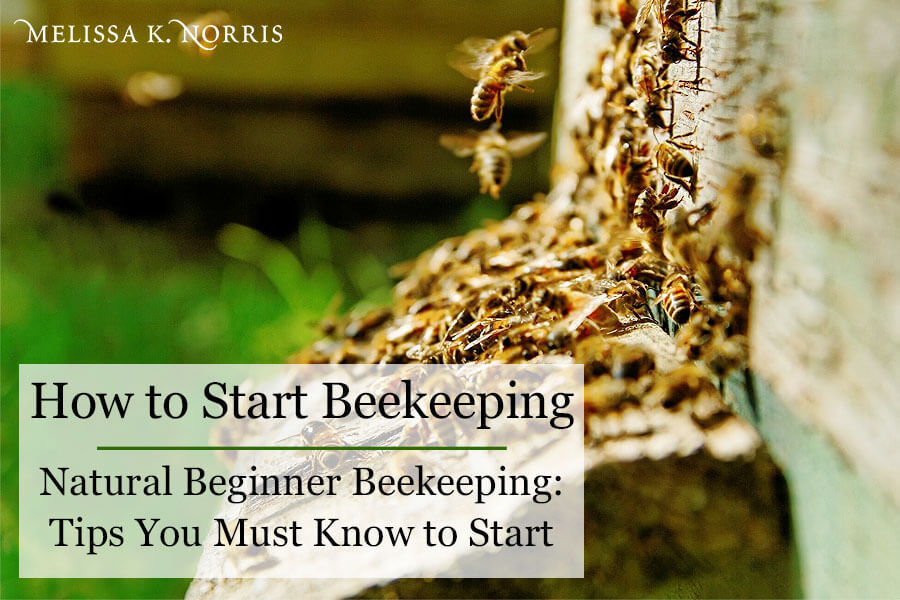
Natural Remedies Made Simple
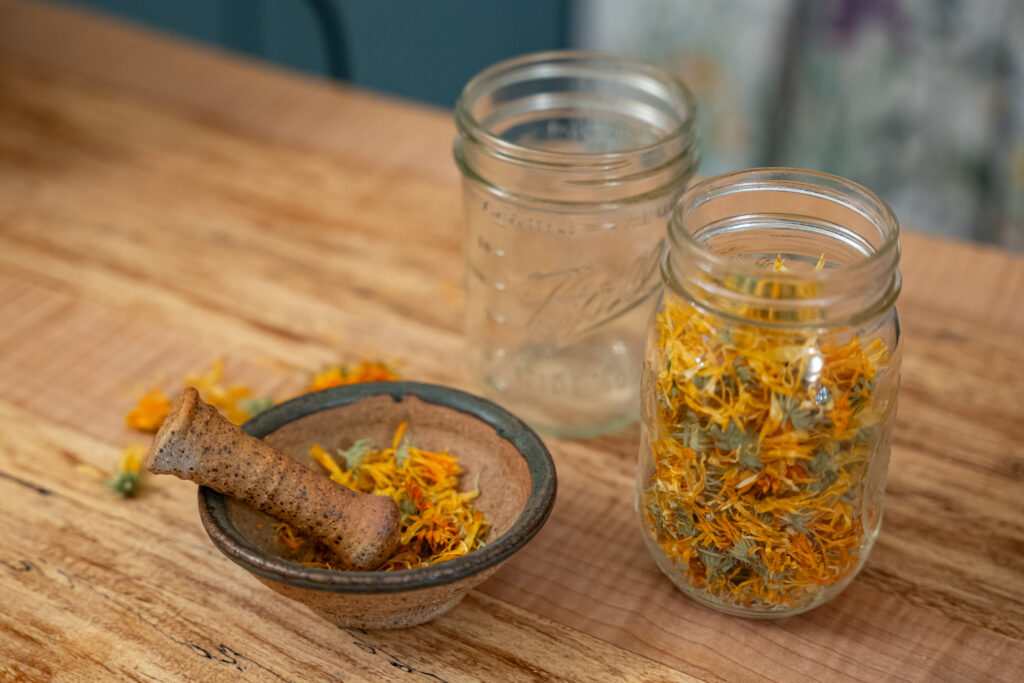
Start your home apothecary with confidence—even if you’re brand new. Learn how to choose the right herbs for your body using the simple principles of herbal energetics.
Discover how warming, cooling, drying, and moistening herbs affect your body—so you can stop guessing and start making remedies that actually work.
Obviously there’s the honey, which is not just for eating and sweetening (although it is wonderful for that). But honey is used medicinally as well, and it’s also one of the most shelf-stable foods you can keep on hand. Read on my friend for natural beekeeping information.
Then you have the byproduct of the beeswax, which can be used to make all sorts of things, including beeswax candles, beeswax wraps for storing food, medicinal salves and balms. So they actually provide us with multiple things. And then of course, bees are also pollinators, which is super beneficial for our gardens.
But despite the fact that I’m a fifth generation homesteader and we do raise a lot of our own food, including all of our meat, I don’t have experience with keeping bees. So today I brought on a special guest and picked her brain.
Table of Contents[Hide][Show]
- How to Start Beekeeping
- Expert advice on backyard beekeeping for beginners
- Things to consider before getting bees
- Three types of beehives
- Beekeeping supplies
- Where to buy bees
- How much time and effort does beekeeping take?
- What to look for when checking beehives
- How much honey do you get per beehive?
- What’s the lifespan of a beehive?
How to Start Beekeeping
Listen in below to the full podcast, Episode #179 How to Start Beekeeping – Natural Beginner Beekeeping Tips, of the Pioneering Today Podcast, where we don’t just inspire you, but give you the clear steps to create the homegrown garden, pantry, kitchen and life you want for your family and homestead.
If you’ve ever been curious about honeybees and about raising your own bees, this episode is for you!
Melissa: So welcome to the Pioneering Today Podcast, Ms. Amber Bradshaw!
Amber: Thanks for having me. It’s a pleasure to be here.
Expert advice on backyard beekeeping for beginners
Melissa: Amber, you’re a beekeeper. So tell us, how did you get started beekeeping and what advice to you have for other beginner beekeepers or for anybody who’s considering keeping bees?
Amber: We started beekeeping in an urban environment. We had less than a quarter acre of land just south of Myrtle Beach on the ocean and there weren’t really many mentors in the area. Finding somebody that could share their experience with us just to learn and glean information from was almost impossible. So everything that I did was by trial and error (mostly error), and I learned a lot.
First and foremost though, if anybody’s considering beekeeping then kudos! We need all of the beekeepers we can get because there are a lot of different species that have made the endangered list.
It just seems like every time we turn on the TV you hear about colony collapse or lack of pollinators and it’s getting worse. So they really need all the help they can get and learning how to start a beehive in your backyard is a great way to help the bees.
So first of all, if you’re interested in beekeeping, I recommend finding a local mentor if you can. A lot of times you can find those with your local extension agency or just even a Google search of whatever state you’re in or the local beekeepers association. They’ll offer beekeeping one-on-one classes and things like that.
Another thing to consider is whether or not beekeeping is legal where you live. I know that’s kind of a crazy concept to wrap your head around, but neighborhoods and even some cities have made beekeeping illegal.
Melissa: Oh Wow. I had no idea that there were regulations or laws like that on beekeeping. That’s kind of sad and fascinating all at the same time. They are so important and I know down in the walnut groves in California, for example, there are a lot of beekeepers across the nation that will actually ship their hives down there to help them pollinate just because they are lacking the bees to pollinate a lot of the big orchards that feed the whole country.
Amber: I think this is such an important thing for people to know about, not just to know how important bees are for pollinating our own orchards and gardens, but also to help the bee species as a whole because, let’s face it, without honey bees to pollinate our food, we would really see the collapse of the entire world.
So many people, they just see their food in the grocery store and they just don’t consider what it takes to actually get it there.

We have to take some responsibility and be a part of the process. Even if we don’t have a garden, even if we don’t have a farm, we can take responsibility by doing things to help support bees, like protecting our water, protecting our environment, shopping local, shopping from your local farmer. All of those small actions play a huge part in safeguarding our bees and our food security.
We’ve got to think further down the road than tomorrow. We’ve got to think further into our kids’ lives and even our grandkids’ lives and take accountability for what part and role we play in that.
Melissa: I completely agree. So with the beehives, from a homesteading perspective, not only are they great pollinators, but you also get honey and beeswax and a lot of other great things from these little honeybees.
Things to consider before getting bees
Melissa: So for someone interested in beekeeping, once they’ve checked to make sure it’s legal and have maybe found a mentor, what are the next steps? What kind of setup should someone have?
Amber: One of the most important things is to have plants on your property that bees enjoy.
Flowering herbs, anise, hyssop, borage, bee balm, lavender and sage… all of those are great. Of course, bees will forage up to five miles from their hive, so even if you do everything organic, you can’t guarantee that every plant they’re going pollinate and take nectar from will be organic. But you can do your part by practicing organic gardening on your own property for sure.
Bees also love and need an ample supply of water. People don’t think of bees needing water, but they drink about three times their body weight per day. So whether that’s a bird bath or even a shallow water dish, you have to have water.
Another thing to consider is placement for your bee colony. Bees like to fly in a straight line, so if your neighbor’s house is really close or your kids’ playground is right there, you don’t want to face your beehive right in their direct line. I always suggest setting up your colony where your treeline is, where half of the hive is shaded by the tree line and half of it’s kind of in the sun facing the opposite direction of where you’re going to walk or where your kids are going to play.
If you only have one spot and it faces right at your front door, you can place a hedgerow or a section of fence about five or six feet or more in front of the hive and they’ll be forced to fly up and over it and over your head.
Three types of beehives
Amber: If you want to be a commercial beekeeper, I highly recommend something called the Langstroth hive. It just looks like a rectangle and has little boxes that stack on top of each other. It’s really easy to open up the boxes and take a look and the design makes it really easy to harvest the honey.
If you’re going to be a hobbyist beekeeper, you could still go with the Langstroth hive for convenience. But if you want to be a more naturally-minded beekeeper, I would recommend the Top-bar hive, which allows bees to build their comb naturally.
A bee in the wild would create their hive in a tree and they would draw their comb down. So it looks like it’s sagging or dripping down. That’s how they would do it in nature. But the Langstroth hive, which most commercial beekeepers use, they draw the comb out on wax foundations that are manmade. So we’re manipulating bees inside a perfect little boxes that are neat and tidy for our sake. And that’s not really what they would do.
The Top-bar hive offers bees a much more natural environment. A lot of beekeepers will argue with me about this and that’s fine. We all have our own way of doing things. But this is my personal opinion based on my experience and the research that I’ve done.
The Warre hive is another option. It has fixed combs and it drops down just like the Top-bar hive. Unfortunately though, because it’s a fixed frame, these are illegal in a lot of states and even countries. I think Australia banned them completely because you’re not able to remove the frames to inspect them for pests and diseases, but I think that hive is very good.
It’s completely hands off. So if you want to just try to preserve the species and you’re not really interested in collecting honey or in raising bees for commercial reasons, then that might be the hive for you.
Beekeeping supplies
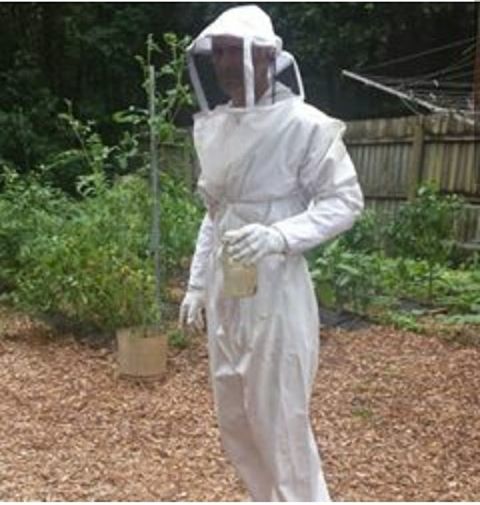
Other things that I would recommend for a new beginner beekeeper to do is definitely get a veil because one bee sting in your eye and you can go blind for life. It’s just not worth the risk. If you’re comfortable with the bees, by all means let him crawl your skin. But keep your face covered.
I recommended the suits too, but if you’re frugal-minded because it’s around $100 bucks, you can get one of those tieback suits at home depot for $10. That’s what we’ve used over the years and it lasts just as long and it’s $10 versus $100.
Other than that, you could use some gloves too. Some people don’t use gloves at all. I find them cumbersome to use when I’m dealing with my hives. You can even use those rubber kitchen gloves. And that’s really it until it’s honey extraction time.
Now, when it comes to the bees themselves, believe it or not, they’re a hefty investment and the largest cost of starting a beehive. You can go cheap with a lot of different things and if you’re construction-oriented then you can make your own hive. But generally for a couple hives, for the whole shebang, for us it was around $900. So that’s definitely an investment.
Where to buy bees
Melissa: So what’s the process like when it comes to actually looking for and purchasing your bees? I know there are different types of honeybees, so how would you decide on one type or another? And then where do you actually purchase the bees from?
Amber: There are actually over 20,000 different types of bees, and over 70% of those actually build or live in the ground. So only 30% live in what we would consider traditional beehives. The top three in the U.S. are Carniolan bees, Italian bees and Russian bees.
Russian bees are popular in some areas because they do really good in a colder environment. I have a friend who lives in Michigan and he has Russian bees and they do really well because of the long cold winters.
I didn’t have a choice when I was ordering through my beekeepers association. They had Italian bees because everybody loved the Italian bees. So I really didn’t have a choice, nor did I know the difference at the time.
The point is, different bees have different characteristics that you may or may not want to look for. So whether you’re hooking up with your local beekeepers association or your local beekeeper, try to see what type of bees do best for your environment.
Another thing to consider is getting bees shipped to you versus getting local bees. When you ship bees, they have to adjust to a new climate and environment with different pollens and elevation, etc. So local bees are always going to be healthier and stronger than ones that you get shipped to you.
If you can hook up with a beekeeper that’s going to catch a swarm with you that’s ideal because they’re already used to your area and they will thrive a lot better than ordering through the mail.
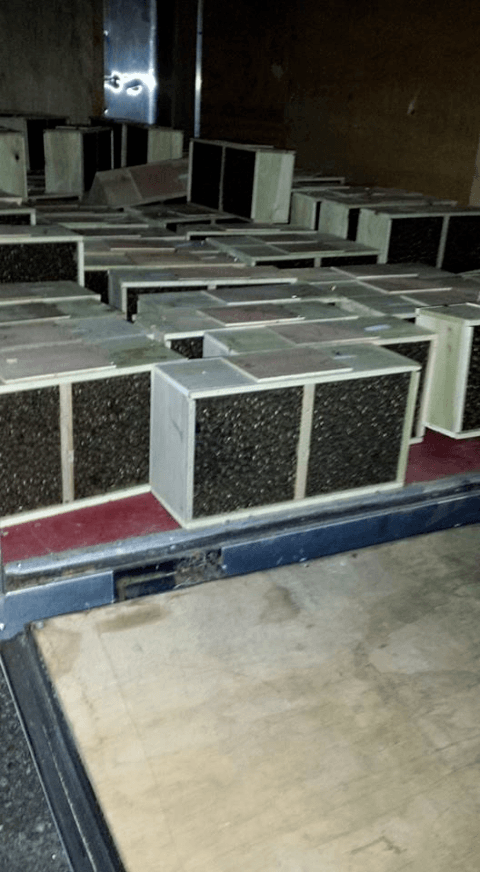
The next thing when you’re doing your research is to look at your climate. The Carniolan bees do really good in heat, so if you’re down in Texas and you have a lot of warm days, they might be a better bee for you. They don’t do really well in the cold like the Russian bees do.
How much time and effort does beekeeping take?
Melissa: So now you’ve got your bees and your setup and all of your supplies, what does your care and maintenance routine look like? How much of a time investment is beekeeping?
Amber: Bees are my easiest livestock to care for. I’m lazy in a lot of ways and they’re so easy cause they’re like, set it and forget it. When you’re first getting your bees established you’re going to be pretty active in their life for about two weeks. That very first setup day you’re going to spend about four hours with them. Then you’re going to just check on them daily, make sure the water is full. They have to have water daily now.
Then generally when you have your hives, you check on them once a month after their established. You just take a look at them, see if you notice anything off. You don’t open their hive at all in the wintertime because the cold can kill. So you can take the whole winter off. Then springtime gets a little busy with harvest time, (we call it honey days). So you can have a honey day in the fall and you can have a honey day in the spring. So really kind of two days out the year you’re going to spend with your bees harvesting all day long. Other than that, it’s just a monthly pop in say hi, sit down, take a look at them and that’s it.
Melissa: Okay. I like that kind of livestock because I’ll tell you what, chickens and pigs and cows require a lot more maintenance than bees do! So that’s pretty awesome.
What to look for when checking beehives
- Check on the queen
- Check for pests or diseases
- Make sure the hive looks clean and tidy
- See if they need more or less room
- Check to see how much honey’s in there.
Melissa: So when you are checking on your hives, what are you looking for? Just to see that the honeycomb is developing and if it’s not, are there certain things that you want to do?
Amber: Yes, so when you do your inspections, the first thing you want to look for is the queen. A lot of times when you purchase brand new bees, you can ask them to mark the queen and they’ll take a marker, like a paint marker and put a dot on her back.
You always want to make sure that you’ve got a queen because hives cannot survive without a queen at the helm. After you see her the first couple of times, you’ll begin to be able to pick her out really easy because she’s the biggest bee in the entire hive. So you want to check on the queen.
Then you want to look to make sure there’s no disease. There are several different diseases that can impact the hive. So you want to check to make sure that your hive looks clean and healthy.
Bees will work themselves to death. That’s their job. They all have a job in the colony and they will work from the moment they’re born to the day they die and if they’re not keeping that hive clean, something’s wrong. If they’re not keeping the bugs at bay, something’s wrong. So you want to make sure your hive looks in order.
The next thing is you want to see how the honey’s developing. If you’ve got a lot of honey and the bees are going to need more room, you’re going to want to add another box to allow them more room. Now if they have too much room, you’re going to want to reduce their boxes just so they can keep up with the maintenance.
How much honey do you get per beehive?
Melissa: Okay. That was fascinating and very detailed! So typically for, say, two boxes, about how much honey are you going to get at harvest time?
Amber: There are so many factors that determine how much honey you get in the end. But if your bees are in good shape and every single one of them is making that honey nectar flow, you’re looking at pulling in about 70 pounds of honey per hive. So you could theoretically have about 140 pounds for two.
You also don’t want to harvest all of the honey in the hives before winter either. You’re going to want to leave some for the bees, so how much harvest you get in the fall will also depend on how long your winters are and how much honey you need to leave in the hives. B ut if you live in a place there has short winters, then you can take more honey from them to enjoy, sell, give away or what have you.
Now, if you’re thinking, okay, I’ve got 140 pounds of honey, people are selling honey at $10 a pound, yes, you can make really good money from it because a lot of people are seeking that raw, natural, unfiltered honey. You just can’t find it at the grocery stores. No matter what the labeling says. You’ll find you get into it for a hobby with two hives, before you know it you’ll have a wait list every season after you pull honey.
What’s the lifespan of a beehive?
Melissa: Alright, so provided your bees don’t come down with disease and they have fairly ideal conditions. What’s the average lifespan of a hive?
Amber: The average lifespan of a female worker bee is 30 days. Now she can live up to three or four months, but that’s it. Your drones are pretty much the same. But your queen bee will last anywhere from two to four years.
You want a pretty strong rotation. It’s so important to create a strong hive because if you have a weak hive, they’re going to rotate over and over and those genes are going to be broken down and you just keep on generating weaker bees. And before you know it, you have an entire colony that’s just volatile. The wind blows and they can all die. So if you have a strong colony to begin with, and every 30 days or three to four months, they’re rotating out, you’re going to continue to grow good genes.
Generally speaking, a hive will last at least a few years because they’ll make a new queen bee once the original queen bee starts to deteriorate. So you have your initial investment of your $900 for two hives, provided your hives are healthy, they’ll definitely last long enough for you to earn your money back, in honey or in profits. The only thing that you will have to reinvest in is replacing a box or a frame here or there because the wood does deteriorate. But the reinvestment is very minimal.
Melissa: Thank you so much, Amber. I’ve really learned a ton from this interview! But I know that’s just a small fraction of the information you have to share on beekeeping, so for anybody who would like to learn more, I highly recommend checking out Amber’s new book, Beekeeping For Beginners.
Amber: You can also find me at myhomesteadlife.com or on my Facebook page by the same name. I would love for you to come by and say hi!
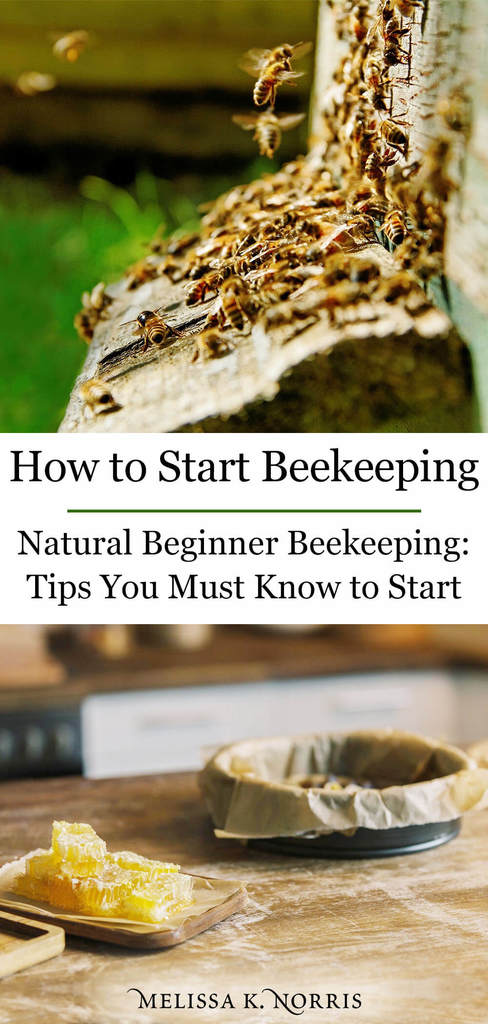
There you have it guys, how to start beekeeping. Do you have bees or are you considering getting hives? Let’s keep learning essential homestead skills together.

